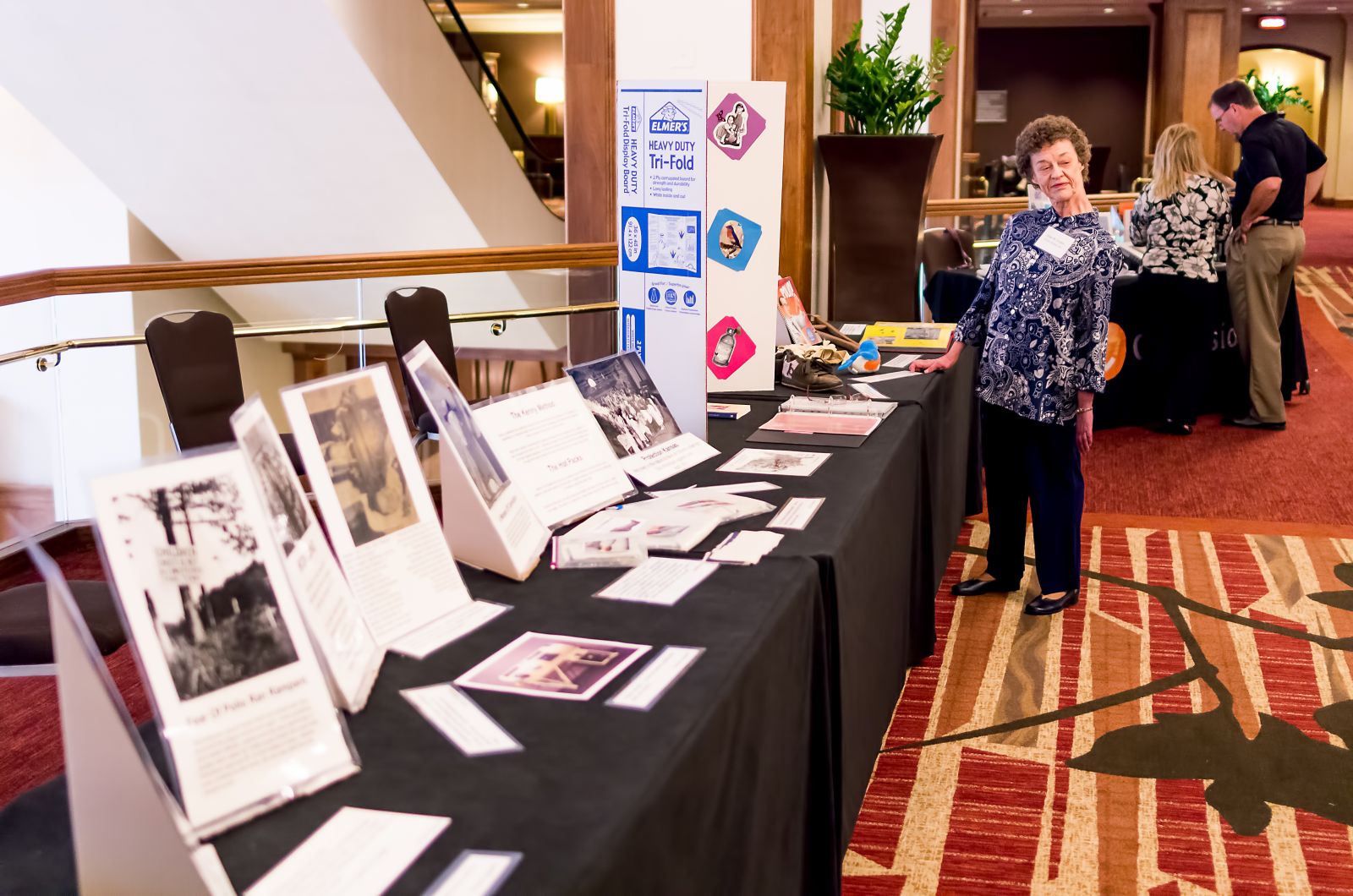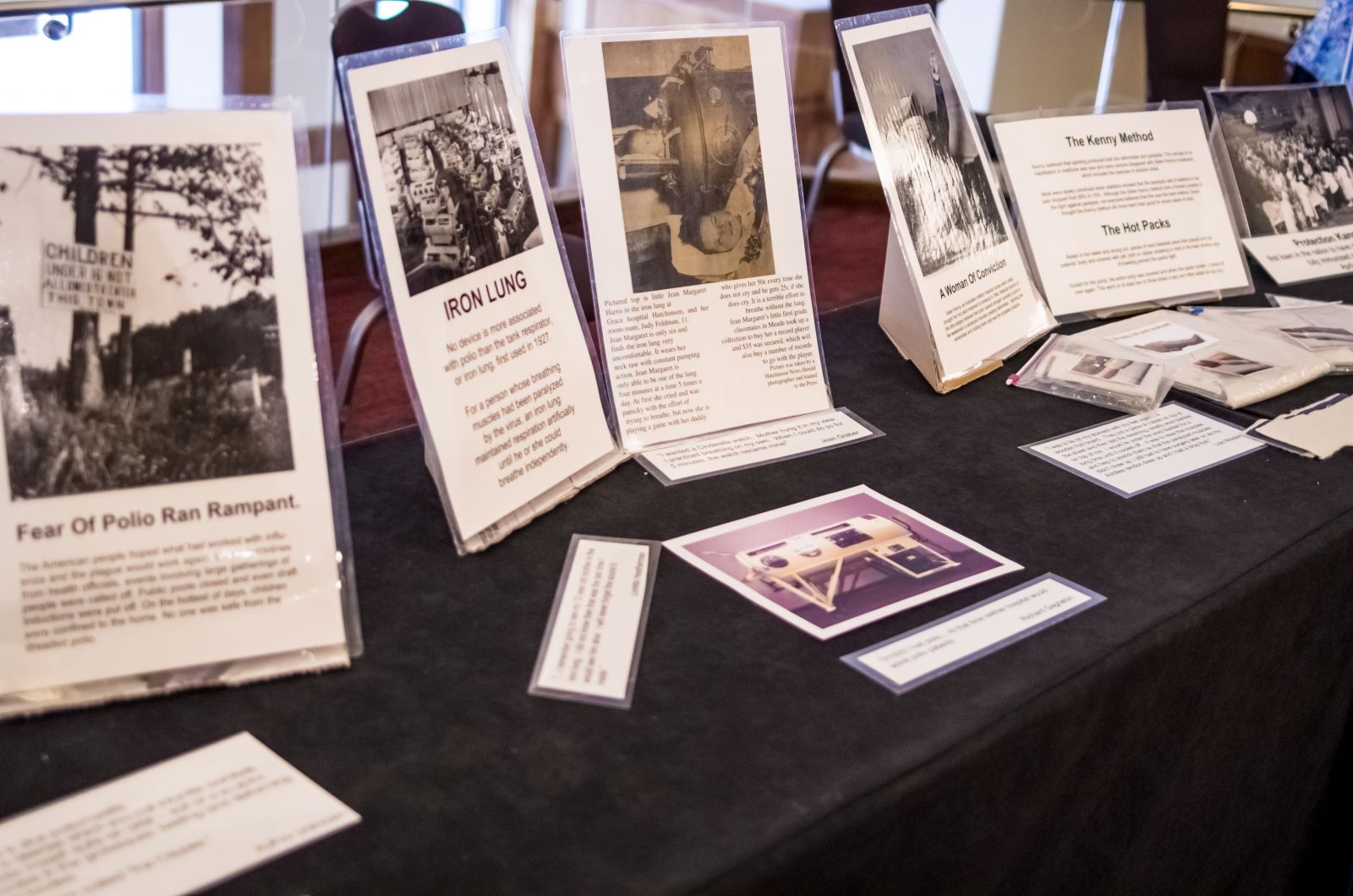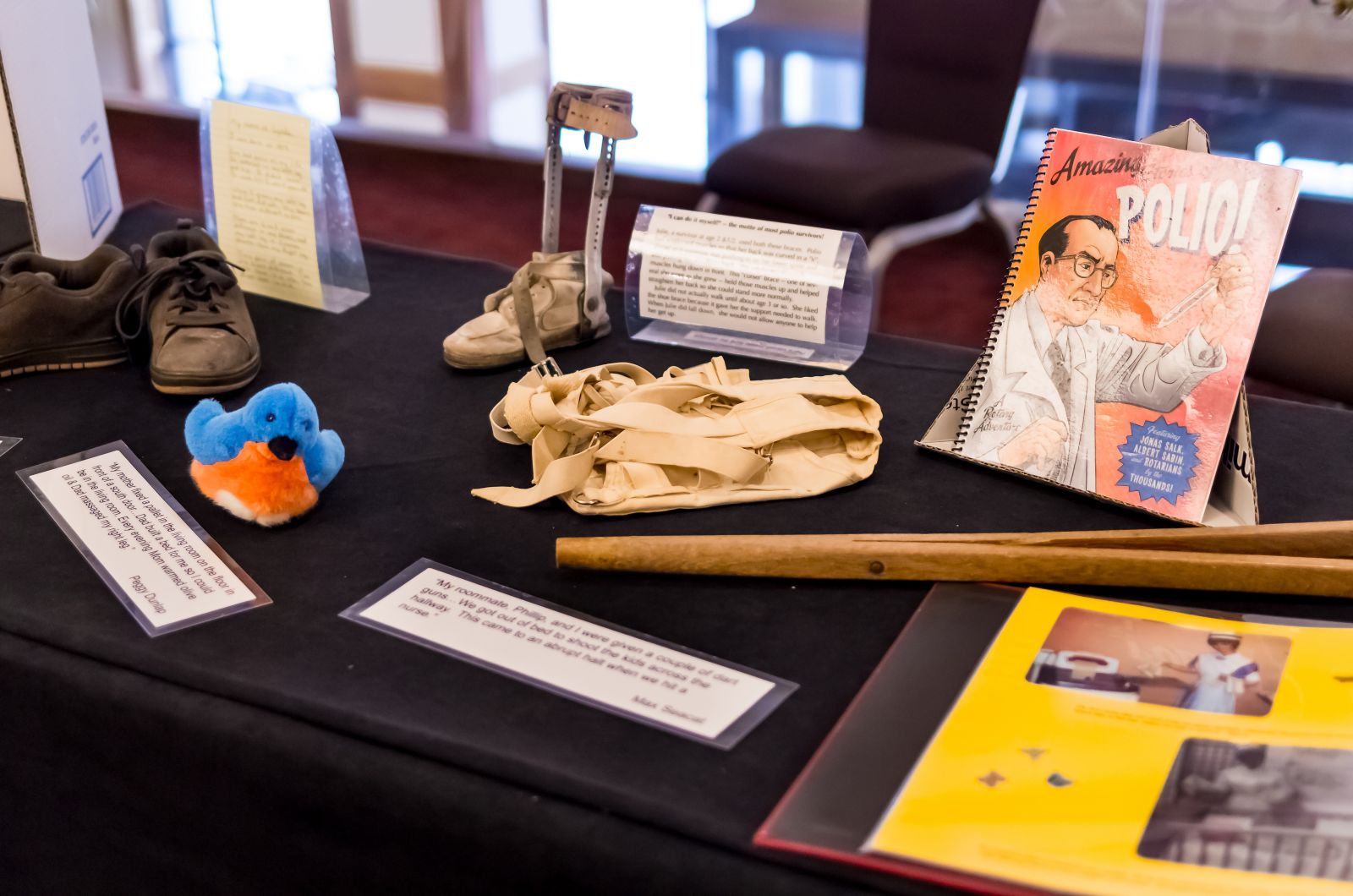Polio Place
A service of Post-Polio Health International
Learning and Sharing Polio’s Legacy
Category: Advocacy
Jean Graber, Central Kansas Polio Survivors Group
Presented at Promoting Healthy Ideas: PHI’s 11th International Conference, June 2014

Legacy means “that which is handed down.”
We are the last major group of survivors to have personally experienced the effects of polio. The fear and uncertainty of the future was very real to us and our families. And yet, nearly everyone grew up believing nothing was impossible –there was always a way to do what we set out to do in life!
The Central Kansas Polio Survivors Group decided to connect today’s school-age children with our own growing up years. We had four goals: They would learn about polio and experience a few of its effects first-hand. They would know that continued immunization prevents polio. They would learn that disabilities of any kind do not make persons less valuable. They would realize that barriers in their own lives need not be insurmountable.

We wanted to offer teachers a variety of venues through which to present the information. All are included in curriculum standards of fifth grade–through middle school. The teachers choose what parts best fit their own students. Author Peg Kehret’s book, Small Steps, her autobiography of having polio, serves as the cornerstone of the Traveling Trunk. Most teachers have read it aloud as a pre-teaching tool for their students. A few have read a chapter or two and then incorporated some activities. Most all include the trunk primarily in their social studies/history time. Each teacher does a pre and post checklist inventory of the trunk’s contents as well as an ending survey evaluating the trunk’s results with their students. The trunk has to be scheduled around the best time for student learning and teacher presenting, student testing, and holidays! Every teacher prefers a month or six weeks of “trunk time!” Each year teachers say they find something more in the trunk to add to their lesson plans.

Contents of the Traveling Trunk include:
-
An antique wooden crutch for display and a pair of crutches for use
-
Two DVD’s – sound of a real iron lung and “The Bluebird Song”
-
References to You Tube videos
-
Replicas of hot packs for students to actually try on
-
Seven children’s books relating to polio
-
12 survivors’ quotes to display
-
Graphs for math about polio and accompanying activities
-
Photo album (several stories, variety of pictures, list of actual Sister Kenny exercises, etc.)
-
Three copies of Small Steps
-
Riddle Card activity
-
5 copies of Polio’s Amazing Stories with learning activity
-
Plush bluebird to go with the song
-
Two different-sized shoes worn by a member
-
Nose clips, straws, and alcohol wipes for breathing activities
-
Child’s shoe brace and a corset brace worn by members
-
24 laminated polio pictures for teaching tools and/or display
The Teacher’s Manual offers many additional activities.
- Hands-On learning
§ The Hot Packs
§ Learning to Mirror-Read
§ Experimenting with Crutches
§ Experimenting with Breathing Restrictions
-
Polio-related words to spell or define
- Activities involving writing:
§ Connecting with an Author
§ Connecting with a Polio Survivor
§ Connecting with Polio’s Past
Tagged as: advocacy , education , history
Opportunities to Participate in Research
NEW STUDY ON AFM AND POLIO A new study concerning acute flaccid myelitis (AFM... More